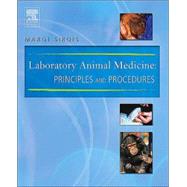Laboratory Animal Medicine : Principles and Procedures

Laboratory Animal Medicine : Principles and Procedures
- ISBN 13:
9780323019446
- ISBN 10:
0323019447
- Edition: 1st
- Format: Paperback
- Copyright: 11/23/2004
- Publisher: Elsevier Science Health Science
- Newer Edition
Rent
Sorry, this item is currently unavailable on Knetbooks.com
Note: Supplemental materials are not guaranteed with Rental or Used book purchases.
Extend or Purchase Your Rental at Any Time
Need to keep your rental past your due date? At any time before your due date you can extend or purchase your rental through your account.
Summary
This combination text and lab manual provides clinically relevant coverage of laboratory animal medicine and procedures. It covers a variety of species, including rats, mice, guinea pigs, hamsters, rabbits, gerbils, ferrets, nonhuman primates, and in a separate chapter, nontraditional lab animals, such as swine, chinchillas, armadillos, reptiles, amphibians, bats, farm animals, and dogs and cats. Coverage of each species is presented in a consistent format that includes taxonomy, anatomy and physiology, uses in biomedical research, reproduction, behavior, husbandry, restraint and handling, identification methods, injection techniques, medication administration and anesthesia, blood collection, common diseases, and euthanasia. Other key topics include the laboratory setting, regulatory guidelines, and ethical considerations. The lab manual portion of the book features a variety of exercises and observation sheets. Comprehensive coverage of a variety of topics such as animal species, the laboratory setting, regulatory guidelines, and ethical considerations prepares readers for a career in laboratory animal medicine Familiarizes readers with the handling, behavior, nutrition, and lab and treatment procedures for a large variety of common and nontraditional laboratory animals The consistent organization of each species chapter makes it easy for readers to quickly identify similarities and differences among various laboratory animals Laboratory exercises are included in a perforated section at the end of the book, allowing users to apply their knowledge and develop job skills Features a wealth of user-friendly features such as a two-color design, learning objectives, key points, and review questions Provides detailed information on specific legal and ethical requirements of lab animal care and use, including the ethics of pain management Convenient boxes and tables provide quick access to important anatomic and physiologic data for each species Discusses specific uses of each species in biomedical research, providing readers with a perspective on animal use that allows them to explain the benefits of animal use as required by veterinary technology program accreditation procedures










